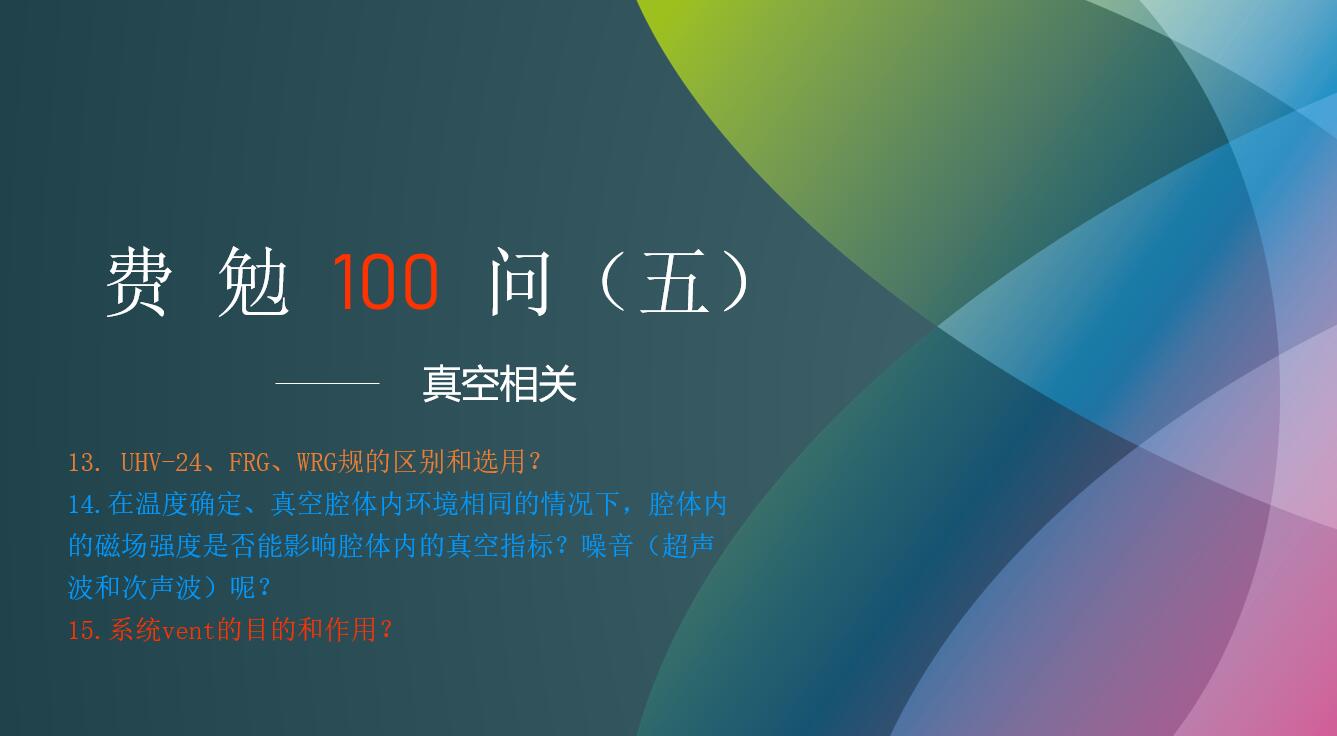 Your current location: Home > Technical Support > Popular Science Column > Fermion's 100 Q...
Your current location: Home > Technical Support > Popular Science Column > Fermion's 100 Q... This question depends on the specific vacuum range. If it is in the vacuum degree of glow discharge, such as ~10Pa, the gas will be broken down by the high voltage of the ion pump. At this time, the ion current is very large, which will far exceed the load of the ion pump power supply. Under normal circumstances, the ion pump power supply will automatically cut off the output and alarm.
If the vacuum degree is higher and meets the start-up requirements of the ion pump, we must also pay attention to the anode life of the ion pump. Under relatively poor vacuum conditions, the discharge ion flow is actually maintained by corroding the anode. The actual life of the pump is related to the working current.
Taking the Agilent ion pump (Vaclon Plus 20) as an example, we can see that the definition of life is actually related to vacuum. Generally, under a vacuum of E-6 mbar, the life of this pump is 80,000 hours (approximately a little more than 9 years of continuous operation).


11. Will the vacuum degree be better if a layer of adsorption material is coated on the inner surface of the vacuum chamber?
Yes. The fresh surfaces of many metal elements can be used as vacuum adsorption materials, such as Ti, Ce, etc. Ti pump is a widely used vacuum pump, which realizes vacuum adsorption by evaporating fresh titanium from titanium rods to the chamber wall.
The linear pipelines of modern synchrotron radiation basically use NEG (Non-Evaporable Getter) material sputtered on the inner wall to achieve ultra-high vacuum, while reducing the secondary electrons caused by electrons hitting the chamber wall and avoiding contamination of optical components. NEG is a relatively popular technology at present. It is mainly made of zirconium-iron-vanadium alloy material. It does not require evaporation. It is activated by heating in a vacuum and transfers the gas adsorbed on the surface into the body (except hydrogen) to repeatedly obtain a fresh surface and achieve vacuum adsorption.

12. What is the purpose of NEG pump activation?
NEG pump, non-evaporable getter pump, can be simply regarded as an adsorption pump composed of a very active metal tablet. As the amount of adsorption increases, the surface activity of the getter will continue to decrease, and the pumping speed will also continue to decrease. At this time, the NEG pump needs to be reactivated.
The activation operation of the NEG pump is very simple. Heating allows various gases (except hydrogen) adsorbed on the surface of the getter to diffuse into the body under the action of high temperature, thereby obtaining a clean surface and regaining huge adsorption capacity; while hydrogen is released from the surface into the vacuum cavity and pumped away by other pumps. Therefore, the activation life of NEG we generally refer to other gases except hydrogen. Even if other gases in the NEG body material are saturated, it can still be used as a pump to pump hydrogen.




